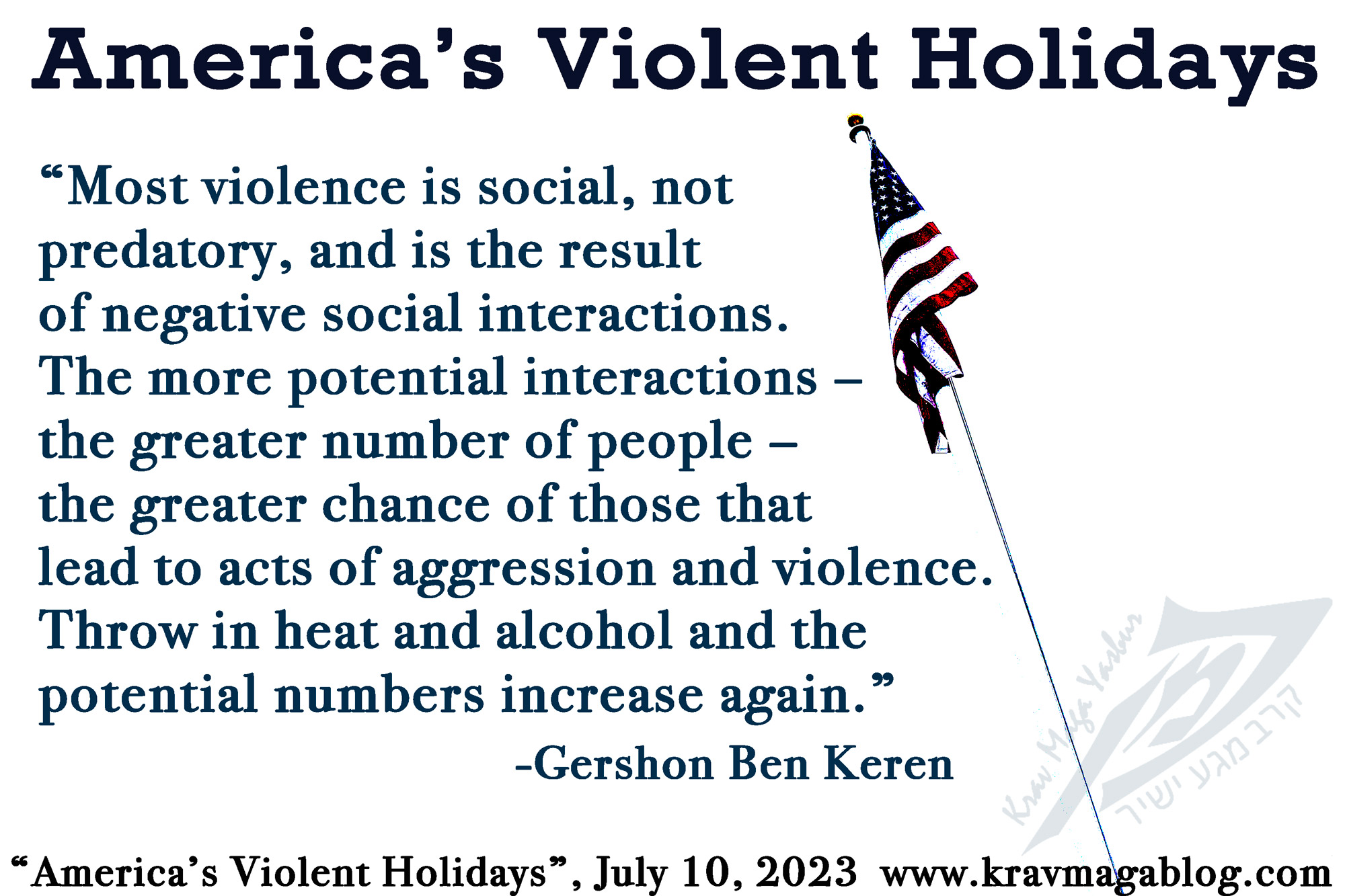Flash Mobs & Civil Unrest, is an article written by Gershon Ben Keren, a 5th Degree Black Belt in Krav Maga, who teaches Krav Maga in Boston, MA. He has also authored three Amazon best-Selling Books on Krav Maga.
When I present on Travel Security, one of the topics I cover, but often do not go into great detail on, is “Civil Unrest” e.g. what to do if you find yourself in a foreign country, when demonstrations, and riots occur. Generally what we advise is not going to those locations or areas where protests are taking place. However if civil unrest occurs in the city or town where you live – as is playing out in Baltimore at the moment – you may end up finding yourself in the middle of a flash mob. This blog article looks at some of the things you can do to help you come away unscathed.
Recognize the warning signs. If you simply walk into a full scale riot, your awareness level is at zero e.g. did you not hear the noise? – The police sirens, the demonstrators chanting/shouting etc. Backing away, and retracing your route to wherever you’ve come from is your safest option - and doing so with a sense of urgency/immediacy will increase your chances of coming away from the situation unhurt, unscathed or inconvenienced (being picked up or contained in a location by the police or security services). If you are in a situation, where an angry mob seems to be developing leave – it’s as simple as that, and it matters little whether you agree with their cause or not; it is not a good idea from a personal safety perspective to be caught up in a “peaceful” protest, that turns into a riot; it is likely that you will either get hurt by a protestor, or by members of the security force employed to contain, manage and break up the riot.
Seemingly peaceful protests can go bad, knowing what to look out for is key; if you want to disengage from the situation before it turns bad. Most protests, or demonstrations that end up as an angry destructive mob, are orchestrated by a few individuals or groups – sometimes the way the police act and behave may allow small groups to exploit these events and to turn the crowd into a mob. Be aware of situations where a police presence seems to increase – contrary to popular opinion security services don’t just congregate or build up a presence in an area for no reason; they may do so because they have received intelligence that something is about to kick off, or because the situation resembles previous ones where the end result has been a riot. If police/security forces numbers start to increase, your best bet is to leave the area.
Recognize when “groups” are starting to form. Riots and Civil Unrests are rarely caused by random individuals coming together, but when pre-existing small groups draw individuals to them, and then unite. If a situation seems to be developing where groups are forming, think about leaving as quickly as possible. If people stop acting as individuals and start acting as members of a group, leave the situation straight away.
When you exit the crowd/protest go with the flow of traffic, making your way to the sides of the moving mob and look to peel off down a side street, in order to get away. If you move in the opposite direction to the crowd, it will take you longer to make any head way, and it may appear as if you are opposed to the rioters. As you do this stay away from windows and any glass store fronts, as you may end up getting hit by missiles and/or trampled by looters, look to head towards brick buildings that lead on to minor side streets, where you can peel off from the mob (having a good understanding of the area you are in will help you to do this). Rioters normally look to control major roads and intersections, so looking to exit down side streets and minor roads etc. is a good strategy to adopt. Your goal is to break away from the crowd, and not remain part of it. Understand that the security forces will want to contain the crowd, so the sooner you exit the better.
Don’t make your exit look too obvious – running will immediately mark you out as somebody who has a reason to leave quickly and will mark you out to both protesters and security forces. Your first response to finding yourself in such a situation, may be to panic, and try and get yourself out of there as fast as possible however you should move as fast as you can, whilst maintaining the general pace/movement of the group. Sometimes moving slower, will allow people to move around you, and slow down your advance into an area where the security forces will be trying to funnel you – often protesters feel that they are in control of where they go, but more often than not it is the security forces, giving the crowd room to move, before gradually closing the group down and containing them, so moving away at the earliest opportunity is always your best tactic.
If you are part of a group, stay together. Unless you have been involved (or found yourself) in a march, demonstration or protest, it is hard to explain how easy it is to get separated, or lose somebody in the crush of movement. Holding hands, and linking arms may seem over the top, however it is a simple measure that sees everyone stick together, and doesn’t put you in the unenviable position of having to re-enter the crowd to find somebody.
Be aware what the civil unrest is about, rioters/protesters, and people in the crowd may ask you questions and if you can’t answer, and show knowledge about their cause, you will be looked on as somebody outside of the group, which is a dangerous position to occupy. If you find yourself in the middle of a group of protestors/rioters you need to blend in, and appear as if you are one of them. Not understanding “why” you are seemingly part of a group, is a good first step in isolating yourself, and appearing as someone who is opposed to their actions – you don’t want to be seen as someone protesting the protest. Applying or causing sympathy is often a good way to allow protestors who may have a better knowledge of the environment to assist you. Telling a “fellow” protestor that a relative has just died and you need to exit the demonstration (which you were 100% committed to), may cause them to offer help and explain the best and most sensible route to take – in light of the circumstances.
Keep up to date with events on social media; protesters and those reporting on events often announce which roads have been closed, and where the flashpoints are that you want to avoid. This coupled with the use of google maps, can be used to find the safest route out – you may also be able to google the protest/unrest to find out why people are marching in the first place (if you were unaware).
Many security professionals advise carrying solutions, such as lemon juice, to soak garments in, so as to act as filters/protection against tear gas, and pepper spray that the security forces may use against rioters/protesters etc. as well as advising that you carry solutions and sprays to help you deal with the effects of these sprays and gases (and these are all things which work). To be honest, if you are thinking of carrying such items, then it is likely that you are looking at putting yourself in harm’s way by visiting the locations where such civil unrest is occurring. Don’t, avoidance is by far your best safety strategy; if you think you need to carry things to counter act security measures the security services may be implementing, then you are heading in the wrong direction, and should avoid those areas.
This may be a hard one for people to accept, the police and security services don’t have the time or the resources to register you as an individual, even if it wasn’t your intention to become part of a protest or riot; you are in that location, at that particular time and will be treated accordingly, despite the events/situations that lead you to be there. Understand that if when you explain your situation, officers appear unreceptive, it is because they are dealing with a much larger problem i.e. containing the crowd. Be prepared for a possible long wait, as the crowd is first contained and then dispersed. If you do end up being picked up by the security forces, carrying ID will help expedite any interaction you have with the authorities, and will also look like you are not trying to hide or cover up your identity.
0 COMMENTS














